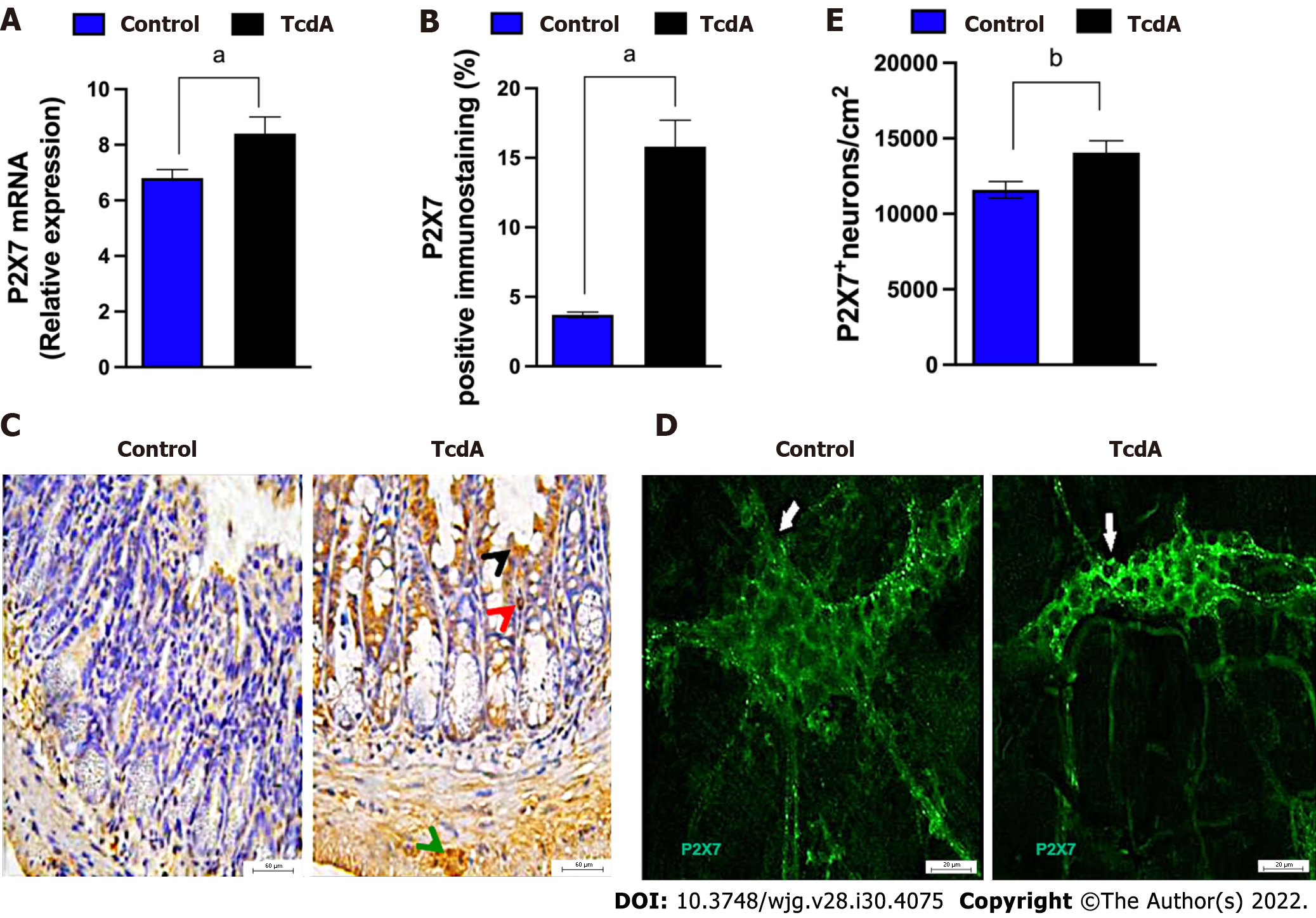Copyright
©The Author(s) 2022.
World J Gastroenterol. Aug 14, 2022; 28(30): 4075-4088
Published online Aug 14, 2022. doi: 10.3748/wjg.v28.i30.4075
Published online Aug 14, 2022. doi: 10.3748/wjg.v28.i30.4075
Figure 1 Clostridioides difficile toxin A increases the expression of the P2X7 receptor in the ileum myenteric plexus of mice.
A: The expression of the P2RX7 gene [mean ± standard error of the mean (SEM)] assayed by quantitative real-time polymerase chain reaction in the ileal samples of mice injected with TcdA [TcdA, 50 μg in phosphate-buffered saline (PBS)] or PBS alone in the ileal loops (Control) (n = 4); B: Quantification of the percentage (mean ± SEM) of the P2X7 receptor-immunopositive area in the ileum from control and TcdA-challenged mice in 5-6 microscope fields per sample (n = 4 animals per group); C: Representative immunohistochemical images of the expression of the P2X7 receptor in the ileum of control and TcdA-challenged mice. Increased expression of the P2X7 receptor (arrowhead) was detected in the intestinal epithelial layer (black arrowhead), lamina propria (red arrowhead), and myenteric plexus (green arrowhead). Scale bars, 50 μm; D: Representative photomicrographs ofimmunostaining of the P2X7 receptor (arrow indicates the region stained green) in the ileum myenteric plexus from control and TcdA-challenged mice; E: Quantification of the number of P2RX7+ neurons/cm2 (mean ± SEM) in the ileum of control and TcdA-challenged mice (n = 4 animals per group); A, B and E: Unpaired two-tailed Student's t test (aP < 0.05; bP = 0.01).
- Citation: Santos AAQA, Costa DVS, Foschetti DA, Duarte ASG, Martins CS, Soares PMG, Castelucci P, Brito GAC. P2X7 receptor blockade decreases inflammation, apoptosis, and enteric neuron loss during Clostridioides difficile toxin A-induced ileitis in mice. World J Gastroenterol 2022; 28(30): 4075-4088
- URL: https://www.wjgnet.com/1007-9327/full/v28/i30/4075.htm
- DOI: https://dx.doi.org/10.3748/wjg.v28.i30.4075









